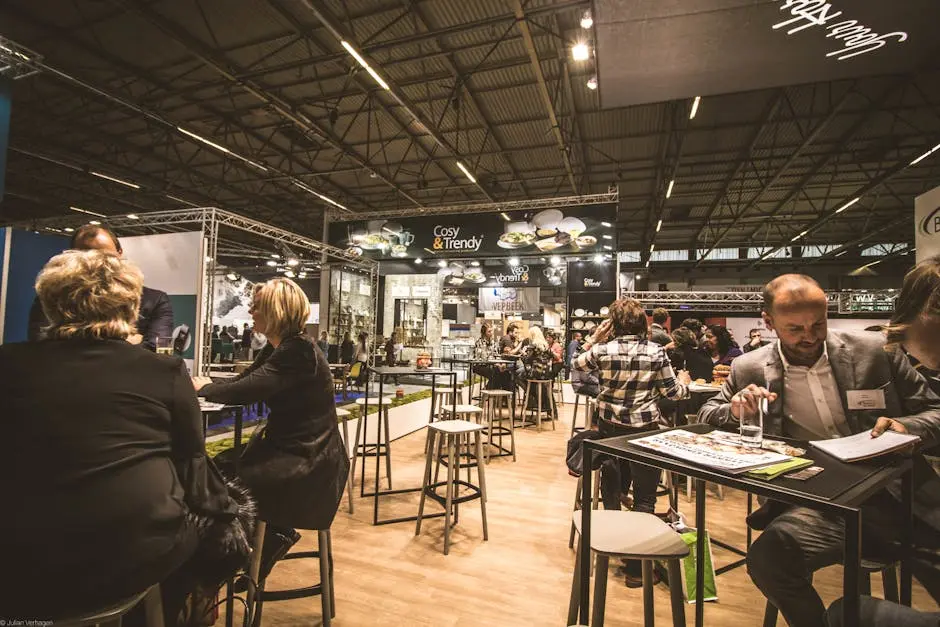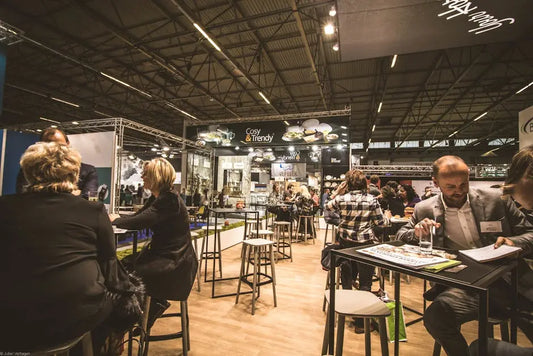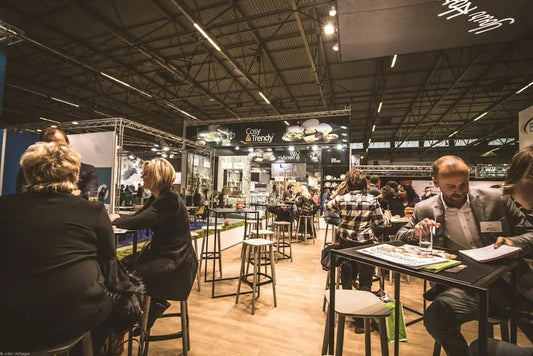Creating an eye-catching trade show display is crucial to standing out in a bustling exhibition hall. Whether you’re a seasoned exhibitor or new to trade shows, understanding how to design a display that grabs attention and communicates your brand’s message effectively is key to success. In this blog, we’ll explore expert tips and strategies for crafting a compelling trade show booth.
Understanding Your Audience and Objectives
Before you begin designing your trade show display, it’s important to define your target audience and what you hope to achieve at the show. Whether you’re looking to generate leads, launch a new product, or build brand awareness, having clear objectives will guide the design process and ensure your display resonates with your intended audience. It’s essential to align these goals with your booth’s features as they can influence everything from the materials you choose to the way you engage with visitors. Setting these priorities will help you focus on what truly matters, ensuring that every element of your display works toward your overarching business aims.
Defining your audience helps tailor your messaging to the right people. For instance, if your audience consists primarily of industry professionals, having a booth that features detailed technical information might be more effective. On the other hand, if the audience is diverse, showcasing user-friendly overviews or benefits can be more engaging. Using insights about your audience can help focus your trade show strategies and maximize your impact.
Key Elements of an Effective Display
An effective trade show display consists of several key elements including the layout, graphics, lighting, and signage. Each of these components plays a role in drawing attention and conveying your message clearly. By thoughtfully integrating these elements, you can create a cohesive and visually appealing display. Start by considering the layout, which should enhance visibility and accessibility without cluttering the space. A good layout invites visitors to explore and interact comfortably.
Graphics and signage must succinctly convey your brand’s essence. Use high-resolution images and bold, readable fonts to ensure clarity from a distance. Adding interactive elements can further elevate engagement, making your booth not just a static display but a dynamic experience. Examples of this might include touch screens or live demos that showcase your products engagingly.
Utilizing Attention-Grabbing Graphics
Graphics are one of the most critical aspects of your display. High-quality, bold visuals can attract visitors from a distance and spark interest in your booth. Make sure your graphics are clear, relevant to your brand, and include minimal but impactful text to engage your audience effectively. Focus on key messages that highlight your unique selling propositions and demonstrate your brand’s identity. For instance, utilizing dynamic visuals like moving light boxes or digital screens can make your booth standout.
Consider the use of colors that align with your branding yet stand out in a crowded hall. Bright and contrasting color schemes can capture attention and direct focus to different parts of your booth. This strategy should be balanced; too many different colors can overwhelm a viewer. Always ensure that your graphics are consistent with your overall marketing activities, making it easy for visitors to connect what they see at the trade show with your other marketing efforts.
Incorporating Interactive Elements
Interactive elements like touchscreens, demonstrations, or virtual reality experiences can significantly enhance visitor engagement. These features not only draw attention but also encourage attendees to spend more time at your booth, allowing you to communicate your message more effectively. Demonstrations, especially, allow potential clients to see your product in action, providing tangible experiences that leave an impression.
Implementing gamification through contests or quizzes is another way to attract and retain attention. These activities can offer small rewards or digital recognitions, prompting more participants to engage with your brand. Additionally, incorporating social media elements can help extend your reach beyond the physical space. Encourage visitors to share their interactions on their social platforms, potentially increasing your exposure exponentially. This can be particularly effective when tied to an event-specific hashtag or campaign.
Maximizing Small Spaces
Not every exhibitor has the luxury of a large booth. However, with strategic use of space, even a small display can be eye-catching. Consider vertical displays, multi-level setups, and streamlined designs to make the most of limited space while maintaining visual appeal. Modular fixtures can adapt to various layouts and are easily reconfigurable for future events, maximizing your investment.
It’s also key to avoid overcrowding. Each section of your booth should have a specific purpose and remain free from distractions. Clever use of light and color can enhance the sense of space, making a small area feel larger and more inviting. Strategically placed lights, such as overhead spots, can draw attention to displays or products, enhancing their prominence despite spatial constraints.
Effective Use of Lighting
Lighting can dramatically affect the appearance and effectiveness of your display. By using a combination of ambient, task, and accent lighting, you can highlight key areas of your booth, create a welcoming atmosphere, and draw attention to important features. Lighting isn’t just functional; it can transform the ambiance of your booth and enhance its appeal while reinforcing brand identity.
Accent lighting can be used to focus attention on specific products or messages, while ambient lighting sets the overall tone of your booth. Task lighting can ensure that activities like reading brochures or signing up for newsletters can be done comfortably. When planning your lighting design, think about the overall mood you want to convey — whether it’s energetic and vibrant to promote engagement, or calm and professional to suggest trust and reliability.
Preparing Your Team for Success
An eye-catching display is only as effective as the team supporting it. Training your team on product knowledge and effective communication techniques is crucial for converting booth visitors into potential clients. Ensure your team is prepared to engage with attendees in a friendly and professional manner. They should be able to answer questions confidently and recognize opportunities to introduce products or services that meet attendee needs.
A well-prepared team can differentiate you from competitors on the trade show floor. Providing staff training on booth etiquette, customer interaction, and leveraging technology will prepare them to represent your brand effectively. Empower your staff to connect with visitors on a personal level, listen to their needs, and deliver tailored solutions. This personal touch goes a long way in building genuine relationships and fostering loyalty.
Conclusion: Stand Out at Your Next Trade Show
Crafting an impactful trade show display may seem daunting, but with these tips, you can create a booth that not only attracts visitors but also leaves a lasting impression. Remember, a well-designed display is your opportunity to make a strong visual statement and engage potential clients. Make the most of your next trade show by captivating your audience and showcasing your brand at its best.



